I have a small pile of things that are slowly, oh so slowly, being worked on at the moment. These works in progress (WIP) are taking longer than they should. Some of this is down to motivation. Some is due to just bare numbers. Some is lack of need. All of this leads to clutter and loss of productivity, though. And that’s what I want to talk about here. That strange, paradoxical fact that having partial projects and too many WIPs can actually slow us down.
Many hobbyists and gamers complain about unfinished projects. They measure success or productivity not solely by the completed projects and games played, but by the number of unfinished projects or unrealized ideas for games. Those figures you painted earlier look great and allow you to have fun, but those piles of minis and terrain for old projects, those are a sign of failure. Those half-finished projects are sitting there judging you.
Well, not really. But that’s the mentality of many gamers. Don’t believe me? Go to a wargame swap meet or flea market and ask people why they are selling the things they are. Some are selling armies and rules that they just don’t play any more. Many are selling things that never came together. Parts for rules that suddenly went bell-up. Armies that were great in concept that were always on the back burner. Terrain for a project that sounded good but never saw the table.
They will tell you these tales and they will sound wistful. They are tales of regret. Sad longing for ideas now dead and being sold for cheap.
Still don’t believe me? How many of you judge yourself by the “piles of shame” or “lead mountain” you have accumulated over the years?
Why does this occur? Some people are chasing the new shiny object. The new rules, the new unit, that hot new game everyone is playing; they all change priorities. Old projects are forgotten. This can be excused. Some of the problem, however, is caused by a simple loss of motivation for a project. Or, for projects.
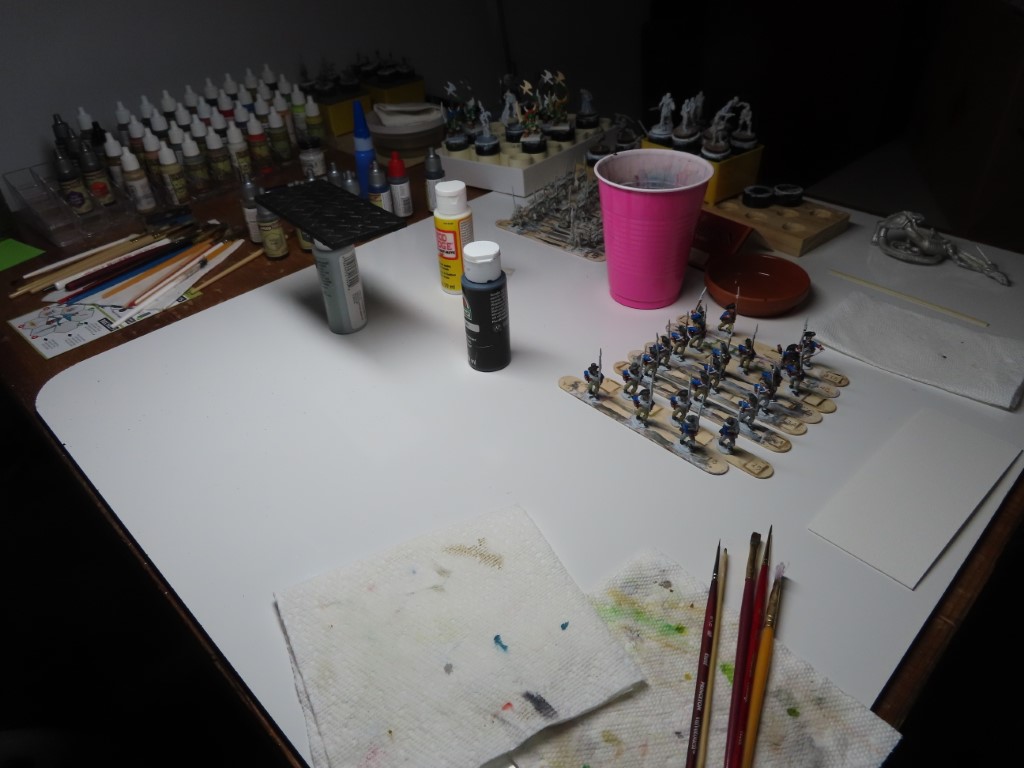
That’s where I am right now. Surveying my domain I find that I am currently in a rut.
I have lots of little things started or planned, but I just can’t get the bat off the shoulder. Time for self-reflection. What’s the blocker here? What is it that is preventing me from completing projects? Potentially I can identify some habits that cause this rut, this lack of motivation, this ennui and then move past it.
Taking on too much at once
Some projects are just huge. It’s the nature of the beast. Creating a new game board is a big job. Paining hundreds of little guys for one of those line-em-up and knock-em-down era games is a lot for work, especially if you are painting up all sides. Doing all of this while learning new rules just compounds the problem.
This is part of my current problem. I have a vague, niggling idea of an ahistorical horror game set in the American Revolutionary War. One idea for a scenario is to use no terrain, or terrain in the usual sense. Instead of buildings and trees I want to try using big blocks of soldiers as terrain. The players are the heroes and villains, the lead roles attempting to fight each other and complete objectives while a larger battle between face-less combatants rages around them.
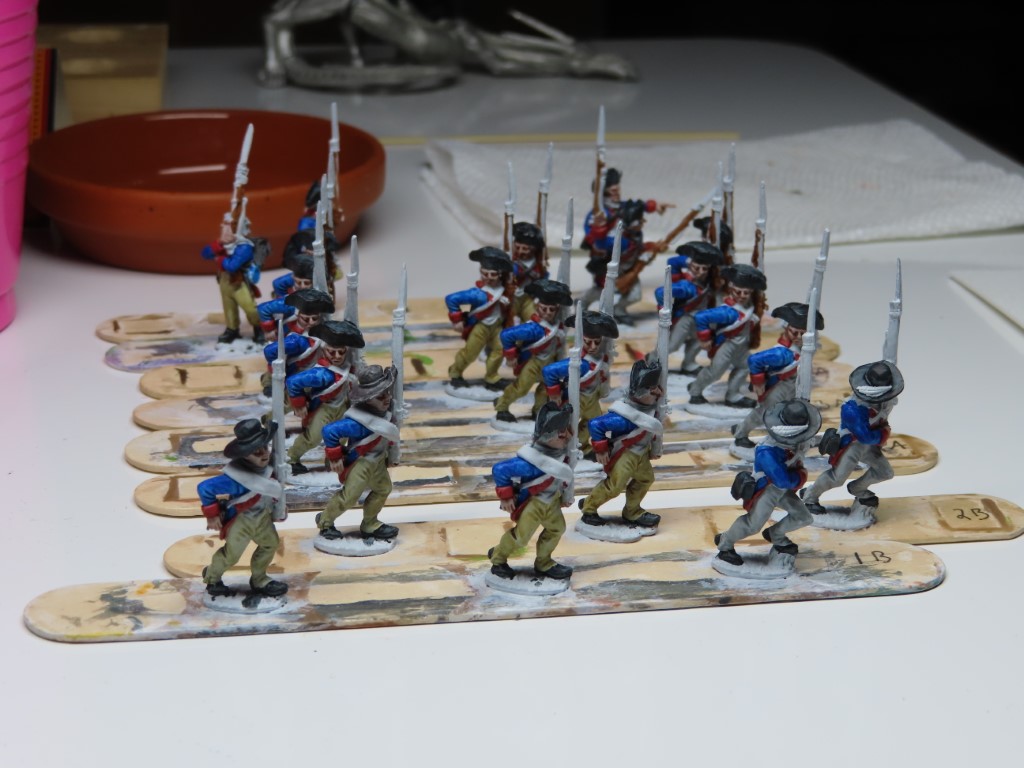
This requires many, many, many stands of 28mm Rev War soldiers. To be useful on the table it’s going to take a big collection. I’m stalling out on painting the first 22 of them. And there are many more to go. This is a lot to try and complete at once.
What I need to do is find a way to break these down into smaller chunks and focus on them to completion. It’s the idea of painting the whole bag of miniatures, 44 in total, that causes the loss of motivation. Not to mention the other 15 bags. Completing a task is rewarding; looking at a wall of unfinished lead is not.
If this is the problem, the solution is obvious. Apply that Agile mindset to my hobby and focus on a deliverable each sprint. Why try to knock out all 44 minis on 8 bases at once, or even in two pushes? Instead, pace the work and focus on getting enough for one stand at a time. Success is a great motivator.
Not having a clear goal in mind
Clear goals? What are those? Requirements? Never seen those.
My motivation tends to flag and falter when I’m not working on things with a goal in mind. That goals doesn’t need to be game specific, just something to explain why I am working on something. The first few posts of this blog were goal oriented; I was putting together parts for a planned convention game. I knew what I wanted and how to get there.
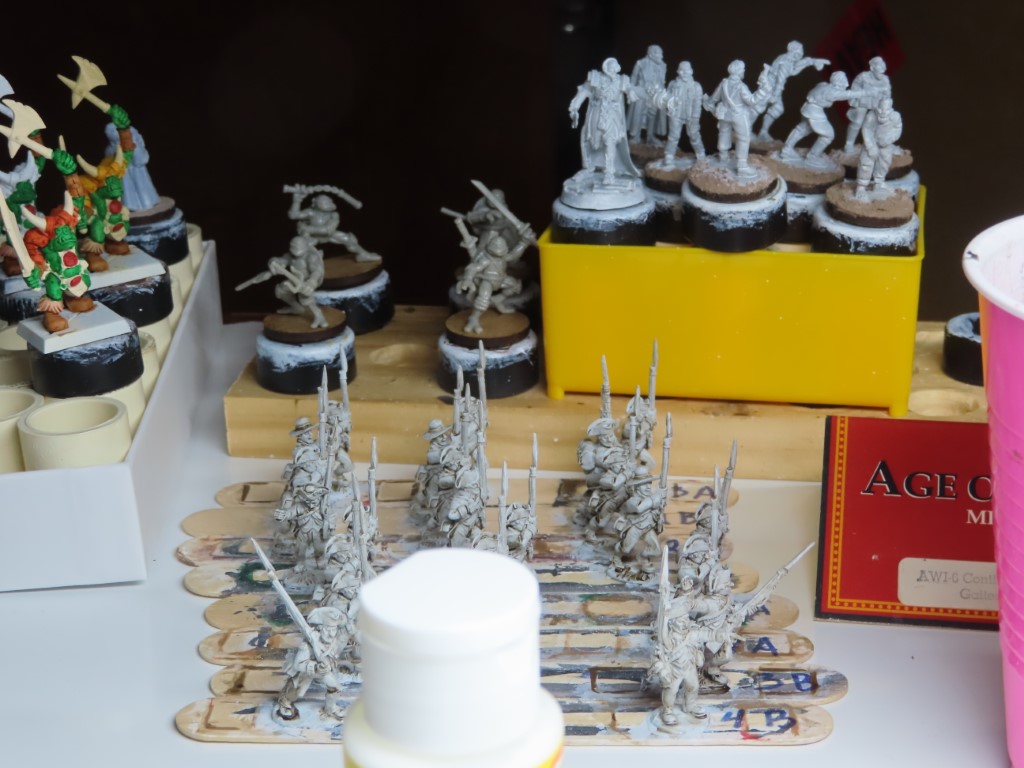
Sometimes the goal has been item specific. Coming out of a convention or a trip to the store, I find that I have specific minis or terrain that I want to see painted. The goal is not to get them to a game or an event, it’s just to see them painted. I try to finish off parts from a Kickstarter before I get the parts for a new one.
Right now I have no goals. I’m painting to paint. This leads to problems. Many people have this same problem, I expect. Having no goal, no objective for these minis, makes it easy to put them off. I don’t need that dragon any time soon. Those adolescent malformed martial testudoi can wait. Those rows of Continental soldiers aren’t going anywhere. This slows productivity.
The solution to get productive again is to put the flagging projects aside and work on something else with a goal for a period of time. Find that mini you want to paint because you want to paint it. Something that will look good on the table. Find a game that you play and a bit of terrain that would fit in the game, and crank it out. Start small.
But don’t be afraid to put aside projects that are stalling. You can always come back to them. A lack of goal is both a curse and a blessing. Without a goal you have no motivation to finish projects but you also have no reason not to put them away and move to other cooler things.
Too many big projects
Wargaming is a hobby of storytelling. Some people want to tell non-fiction stories and others want fiction. Whether you are recreating a historical battle or just throwing made up armies at each other, you are telling a story in a unique medium. Heck, you don’t even need the wargaming part, just the miniatures and terrain and a good imagination are enough for some hobbyists.
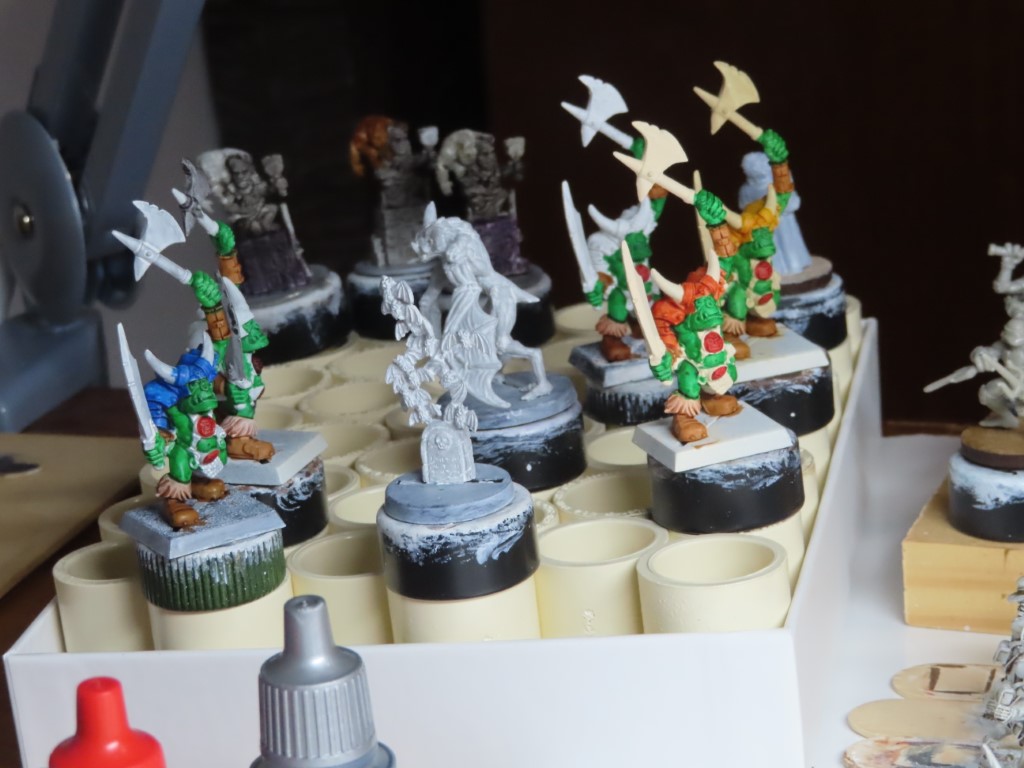
What is one to do if one has lots of good ideas for stories? Or, strike that “good” and just say ideas for stories. It doesn’t even have to be a full-formed story. You buy those parts to make a bit of terrain. You bought that army to work for a specific scenario. You bought that box or cheap swap meet bits because you you have a thought. To crib from Michelangelo, you see the angel in the bits you just have to glue and paint until you set it free.
But these ideas take time and effort. Especially if they are big. They take time and compete for time. If you have a single game and event you want to play on the table, then focus is easy. If you have multiple and no external driver to force you to work on one over the others, then it becomes very easy to make no progress on any of them.
How does one eat an elephant? It’s the same joke with big gaming projects. Even if you have lots of them, you need to pick a workable piece for one and just knock it out. Again, success is a great motivator. Getting portions of the project completed, even if you can’t do the whole thing in one push, will help motivate you to complete the other parts.
For me, this is tough advice to follow. It will again require me to put aside projects until a later date. Those Rev War guys? I may have to hold on them until later. Why? Is it that the project is dead or the idea is bad? Nope. This is psychology. I need to see some victories on the painting table to get me motivated to attack these bigger tasks.
not having all of the parts to finish
This is mostly and excuse, but it can be real. If you have a great idea but can’t find the miniatures you want or need, it can easily kill your motivation for the project. Why put in all of the work to only get 90% of what you want? Potentially that 90% won’t even be usable without those critical missing parts.
For me, again citing the Rev War horror idea I have, there are crucial pieces that don’t exist. You can’t find good skirmish minis for the Rev War period. What I mean for skirmish minis are ones that are individually interesting in pose and look. Something that would look good with just a 10-20 on a table and not need blocks of 100s to look right. For Napoleonic era wars, you have line units and individual skirmish minis but you wouldn’t mix the two. For French and Indian War, there are a lot of skirmish level options. For Rev War… nothing.
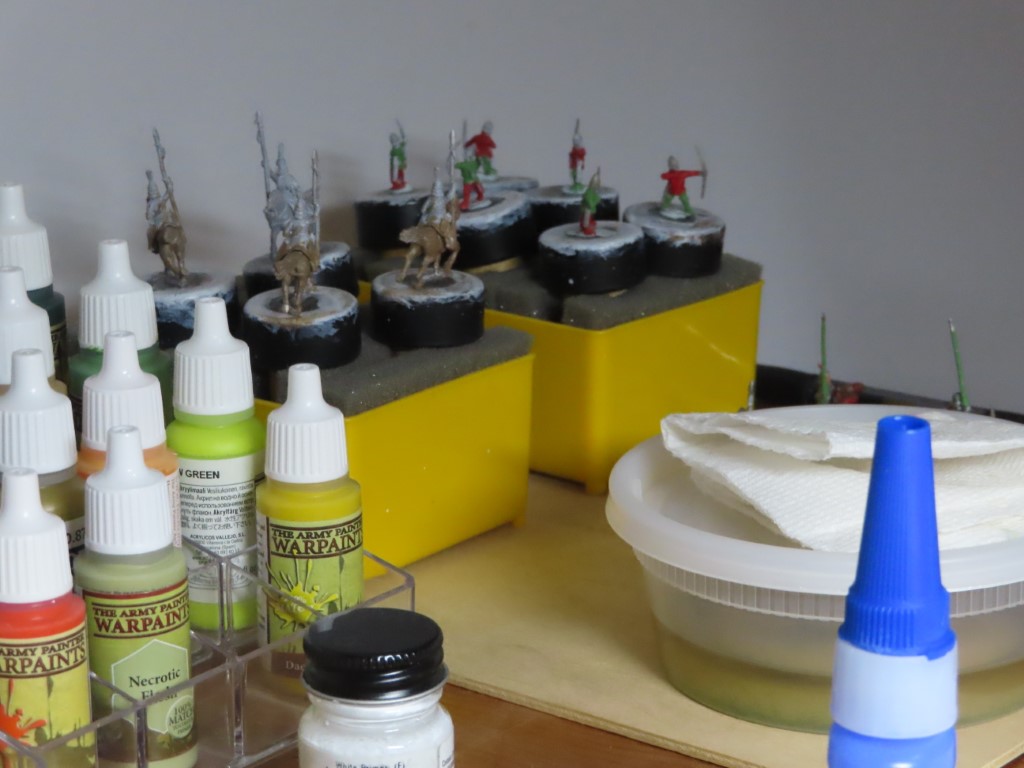
There aren’t even good kits to chop up and bash something together. And for my idea I’m going to need not only skirmish appropriate minis for all sides but they will also need to be different units and soldier types. And some are going to have to be horror-ish.
Those Rev War Continentals are part of the problem. I started them but can’t use them as I want until lots of other things are found or made. This is the same for other projects I have planned. What do you do to keep motivated on a project when you can’t find the right parts?
I don’t have a good answer on this one. What I need to do is to chip away at the parts I can solve and make compromises on those things that simply don’t exist. For most hobbyists and gamers, this solution will work. If you can’t find the exact part or miniature to make your idea work, just use something else. It’s all make believe anyway.
Even as I type that it seems wrong, though. Consider the wargame as a story analogy. Would you tell an author having trouble with a portion of the story to just make up some crap and move along? For gaming, from a purely dice rolling mini moving aspect, the figures don’t matter. But if you are trying to portray a specific event compromises can be compromising. “I couldn’t find the right units for the Battle of the Hook, so I’ll just use these mounted cowboys in place of Lauzun’s Lancers.”
Concluding
I’m stuck in a rut. Is painter’s block a thing? Can we make it a thing? Who’s in charge of things?
My table is currently filled with items that are taking too long or more effort than they are worth. The criticisms above are all valid for me and my present hobby state. From here I think I need to pick some minis that I want to paint because they look cool and just work on them. Set aside the other things partially done and find something in the admittedly large store of unpainted minis that I am eager to paint.
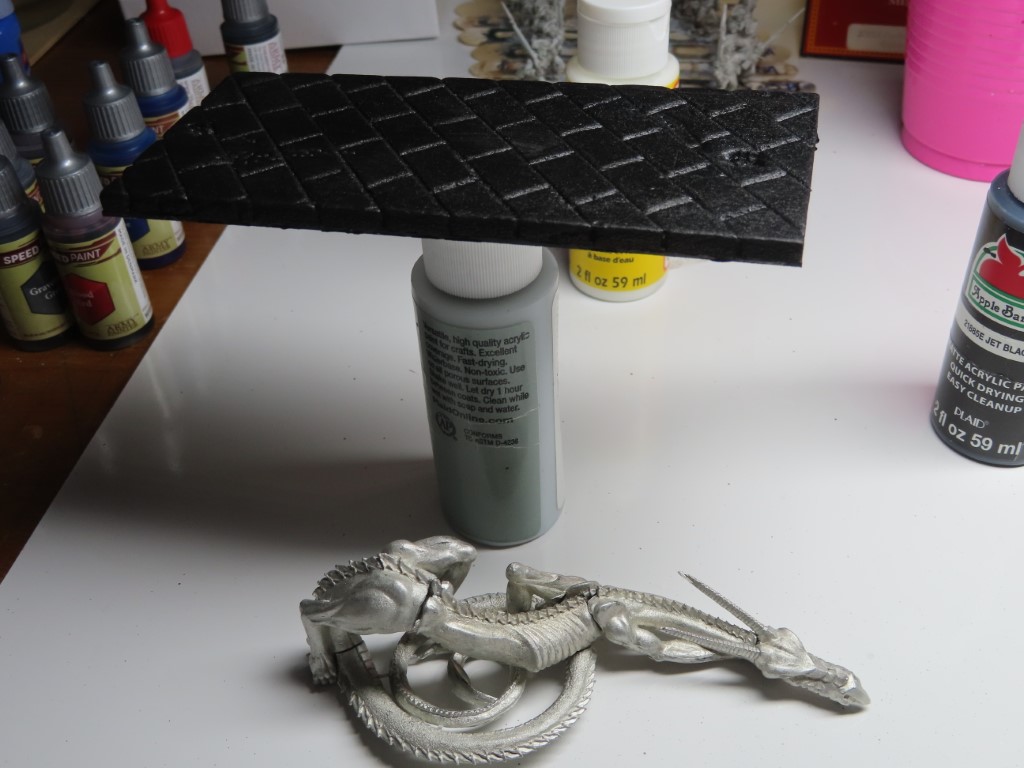
This is the same advice I would give to any reader who find themselves in the same rut. It happens to everyone. If you find productivity dropping or that you are looking at your painting table and finding excuses to do other things, then it’s probably time to make a change. Maybe your self assessment will match mine, maybe not. But don’t be afraid to stop work on things that just aren’t moving forward and shift to something else.
Minis not getting done? Jump to terrain.
Terrain bogging you down? Go write a scenario for you favorite game.
Trying to write scenarios and making no progress? Find a quirky mini your like and paint it up.
2022 Count:
170 figures painted (current rate 0.783 minis/day)
19 figures printed
152 figures purchased
4 terrain painted
Leave a comment